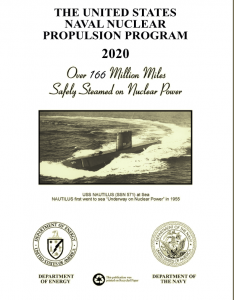The disasters aboard the USS Thresher and USS Scorpion illustrate the complex systems in place within the largest navy in the world. While the direct cause of the sinking of these boats was the collapse of brazen joints, there was a greater systemic failure in the Navy’s development, deployment, and operation of the nuclear submarine program that led to the death of over 200 sailors.
The brazen joints in the USS Thresher, which held together with the salt-water piping system, had experienced a stress test that showed problems in nearly 15% of the joints. Additionally, the USS Abraham Lincoln suffered a similar failure by its brazen joints in 1960 that led to water leakage and the nuclear propulsion shut-off—“scram”—to deploy. Thus, there were clues of the danger of these joints long before the accident occurred. However, this developmental and operational oversight was in the context of the Cold War, where there was a technological arms race against the Soviets, influencing the decision to sacrifice safety measures for dominance on the water. This sacrifice raises the philosophical dilemma of the role that lost lives play in preventing the loss of future ones
The command and control nature of the military structure creates a microcosm where systemic failures can be addressed quickly and effectively. In the case of the USS Thresher, this meant a significant overhaul of the nuclear submarine program beginning with the training and technical details of the program. Admiral Rickover, credited with instating this program, was able to effectively improve the safety of the Nuclear Navy because he had complete control of the program, and subordinates were required to comply with his new requirements or they were fired. The implementation of the SUBSAFE program is an example of a systemic overhaul of a flawed program. While it is a smaller-scale system, it serves as a blueprint for the redesign and execution of a system.
While the SUBSAFE program has proven effective in preventing further deaths on the water in Nuclear Navy, it raises the philosophical question of what role these lost lives play in preventing future ones. The disasters onboard the USS Thresher and USS Scorpion were tragic, but due to the complexity of such systems, disasters like these are inevitable. The risks they pose can simply be mitigated.
The systems have their flaws, I couldn’t help but feel grateful when conducting my research for the mechanisms in place that have prevented other disasters from happening. For example, the Freedom of Information Act which led to the release of thousands of classified documents regarding these incidents holds our military accountable to those it serves–the people of the United States. Without it, the families of the victims would still be in the dark with regards to what happened to their loved ones.
In sum, I am thankful for those that have risked their lives to protect the people of the United States of America and I am hopeful that the judicial and military structures will uphold the high level of safety and effectiveness that the US Nuclear Navy has achieved since the disasters in the 1960s.
